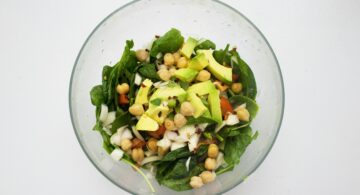GMO Debate in 6 Points
Genetics – is about unraveling the secret code of life itself.
‘Genetic engineering’ – is about real people altering that code.
In the field of medical science, genetic engineering approach offers magnificent potential for conquering disease. Scientists around the world are using the tools of genetic engineering to identify exciting new ways to prevent and treat all manners of disease and disability, from cancer and Type I diabetes to arthritis, heart disease, paralysis and dementia. This promise has generated wide support for continued research, development and commercialization of drugs, test and procedures built upon genetic engineering.
As we move from medical research to agriculture, however, a debate of genetic engineer is raging.
On one side, advocates see the promise in genetically modified plants and animals. Collectively known as genetically modified organism (GMO), the advocates argue that GMOs offer the best prospect for feeding the growing world population. Terminating GMO introductions, the advocates argue, would lead to millions, if not billions, of starving people. They point to the “Round-up Ready” soy bean seed to support their claim, a genetically modified seed that allows for less herbicides to be used and increases production.
Genetic engineering, similarly, offers the potential for creating more nutritious foods with fewer resources to cultivate and are more able to resist attack from pest and weather. They applaud the development of GMO “golden rice,” a more nutritious type of rice that could potentially prevent vitamin A deficiency among millions of children around the world.
On the other side of the debate, critics believe that genetically modified plants and animals pose environmental and health threats that are too scary to risk. They remind us of the “law of unintended consequences” that says even the best researched and most rigorously tested solution will inevitably result in something we could not anticipate. For example,
- Will the release of one type of GMO plant lead to the death of the honey bee so important for the success of countless crops?
- Will the wind-borne pollen for GMO corn cause environmental problems in the oceans?
- Will a GMO chicken bred for faster growth become a host to a killer flu virus?
So, what’s right? Are GMOs worth the known and unknown risk?
Let’s start with one basic understanding. Every scientific breakthrough and every change in technology, comes with both promise and risk. What’s miraculous about humanity is that we have found ways to use our knowledge to build a better world. Yes, some inventions have proven destructive, in terms of wars, the environment and the climate, communities and our health. But step-by-step, we have found ways to extract more benefits from the continued progress of knowledge. More and more people can enjoy a better life, with more certainty about food and shelter, education and self-realization and an extend life span.
But there is more to this debate than simply being pro-GMO or anti-GMO. Genetic engineering has a few basic issues:
- Let’s stay focused on the problem not the solution. GMO is not the only way to feed the world’s growing population. Over 200 years ago, English philosopher Thomas Malthus predicated wide-spread starvation due to growing population. Malthus was proven wrong – no GMO needed. In the 1960s and 1970s, a new group of doubters emerged, believing in the limits to growth in agriculture. The “green revolution” proved them wrong and relied on better seed. Even though they relied on additional fertilizer and pesticides, no GMO was needed.
- But let us also recognize that over the past centuries, humanity has fundamentally altered the genetic make-up of life. We have called it selective breeding. We carefully chose to breed certain animals or cross pollinate certain plants to diminish the loss of some desirable traits or lead to the expression of some undesirable traits. For example, by breeding only dogs with hips above the breed average, they will move toward better (tighter) hips from one generation to the next. This has profoundly affected the “gene pool.”
- The mass introduction of new genetic materials also is not new. For two millennia, men and women have transported plants and animals from one continent to another. This “genetic transport” has resulted in very tragic outcomes. Europeans brought small pox to the new world, and within a generation, caused the death of tens of millions of native Americans. Today, we face the challenges of invasive species in lakes and in our forests. as well as the rapid worldwide dissemination of new flu viruses. Yet, “genetic transport” also delivered huge benefits in countless ways. For example, chocolate, coffee and many of our vegetables (broccoli, carrots, onions, eggplant and many more) originating in other countries are now readily available and commonplace in America.
- Let GMO information be clear and easy to obtain. There are many people who want to know if the foods they eat are GMO-free. They should have a right to this information. Currently, this can be regulated with food labeling. The first would have that any foods containing GMO-based ingredients list a “contains GMO.” People are organizing at all levels of government – local, state, and Federal – to enact legislation that would mandate this disclosure.
- And consider this, even some long time GMO critics are rethinking their position. Why? Because the see GMO as useful for addressing another concern – climate change and global warming. They see GMOs as ways to move agriculture away from a petroleum-based industry with a high carbon foot print.
- But also consider this! There are powerful companies that see tremendous profit from GMOs. However, they do not incur the health risk that could result from a wide scale implementation. They see dollar signs. Instead, we reap the health risks.
So, here is where the debate needs to center. Let’s keep the focus on who incurs the risks and who gets the rewards? Put another way, the whole question of being pro-GMO or anti-GMO is in many ways a bad one.
The better question is: What crop, with what modification, for what purpose and made by whom?
Yes, it’s a complex question, but one that requires oversight by our courts, our regulators and meaningful discussions in our political process.



























